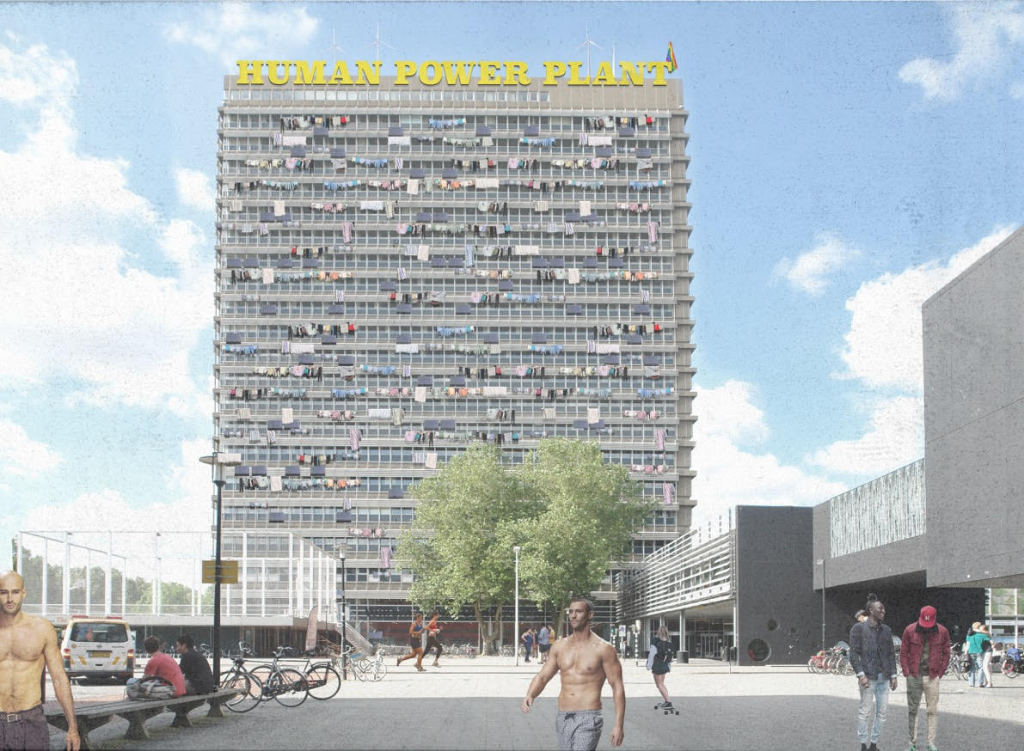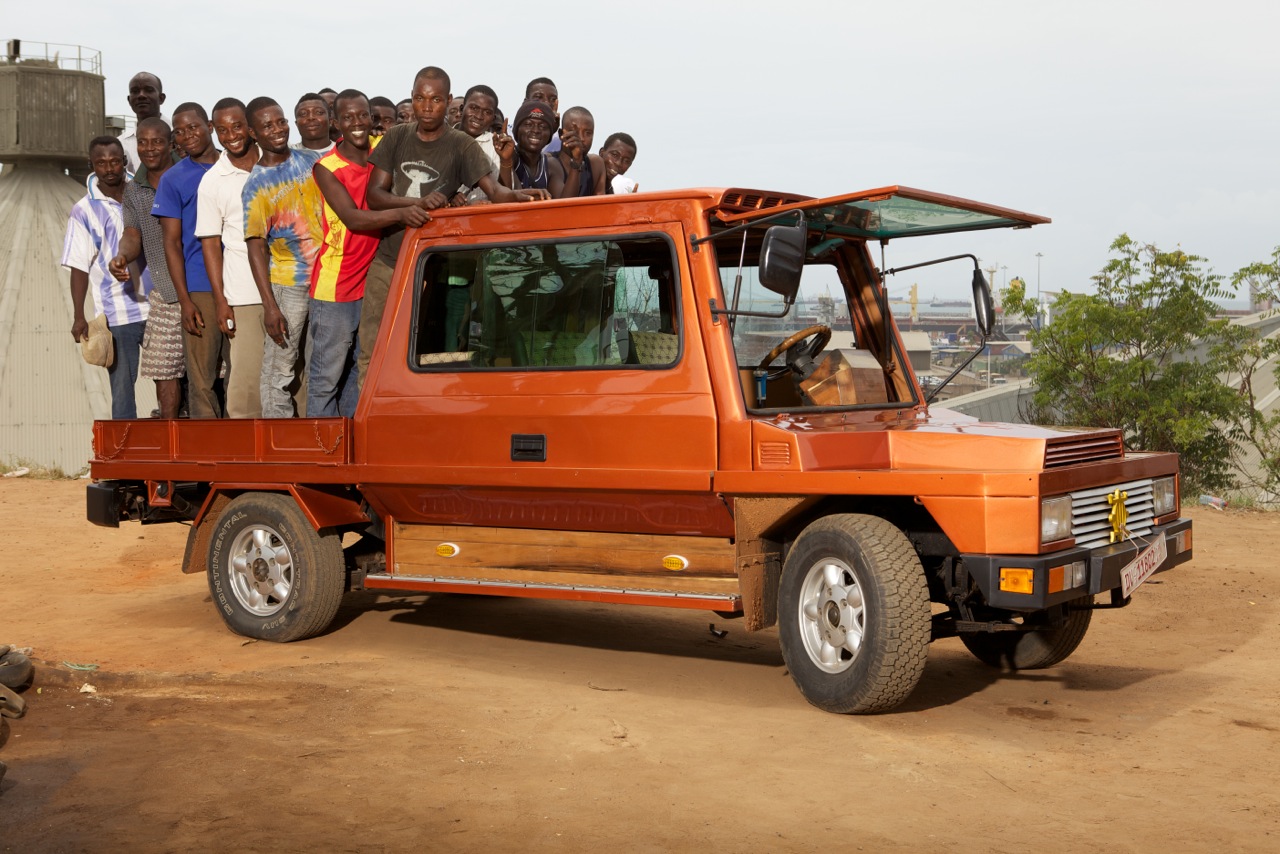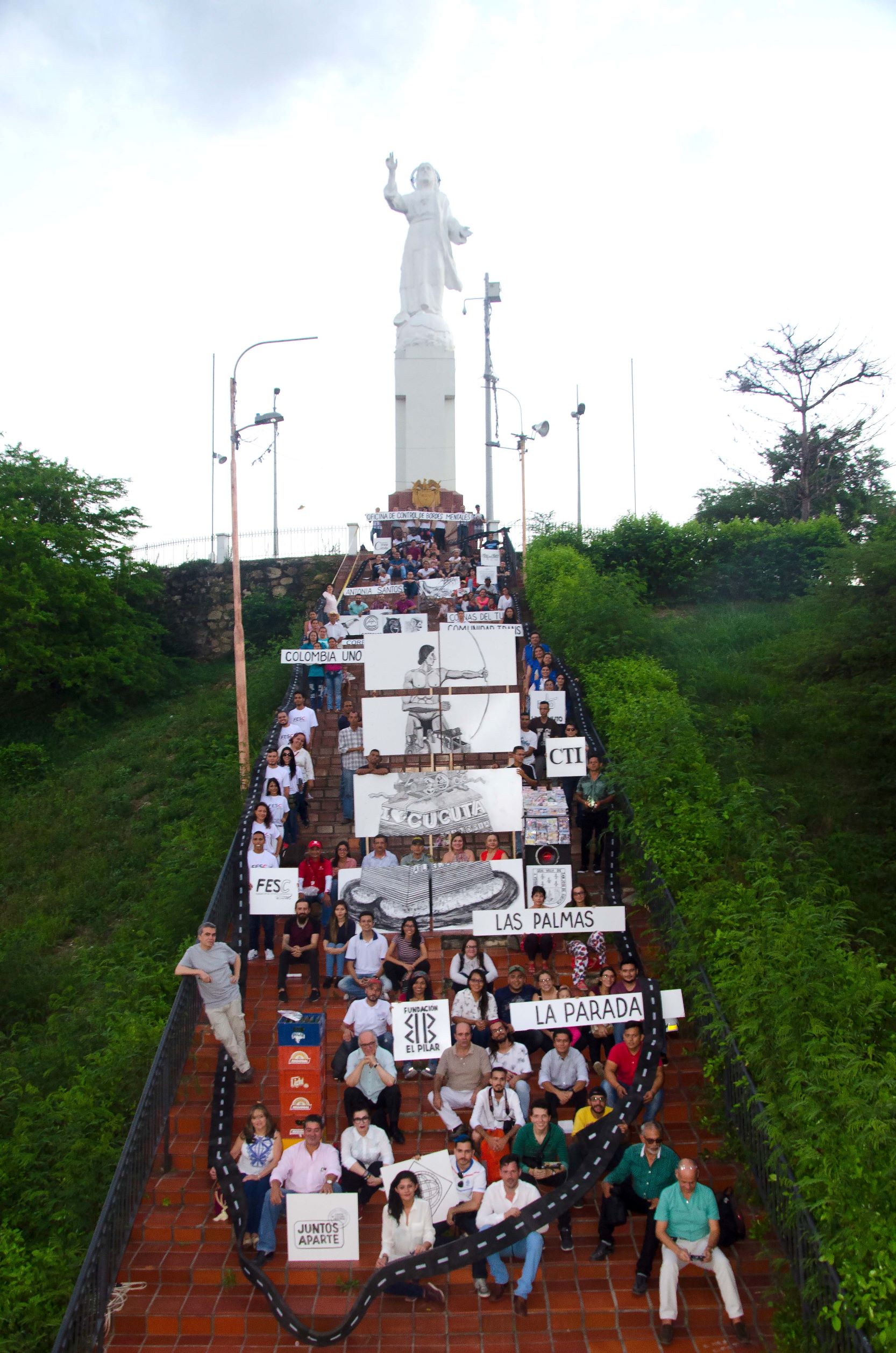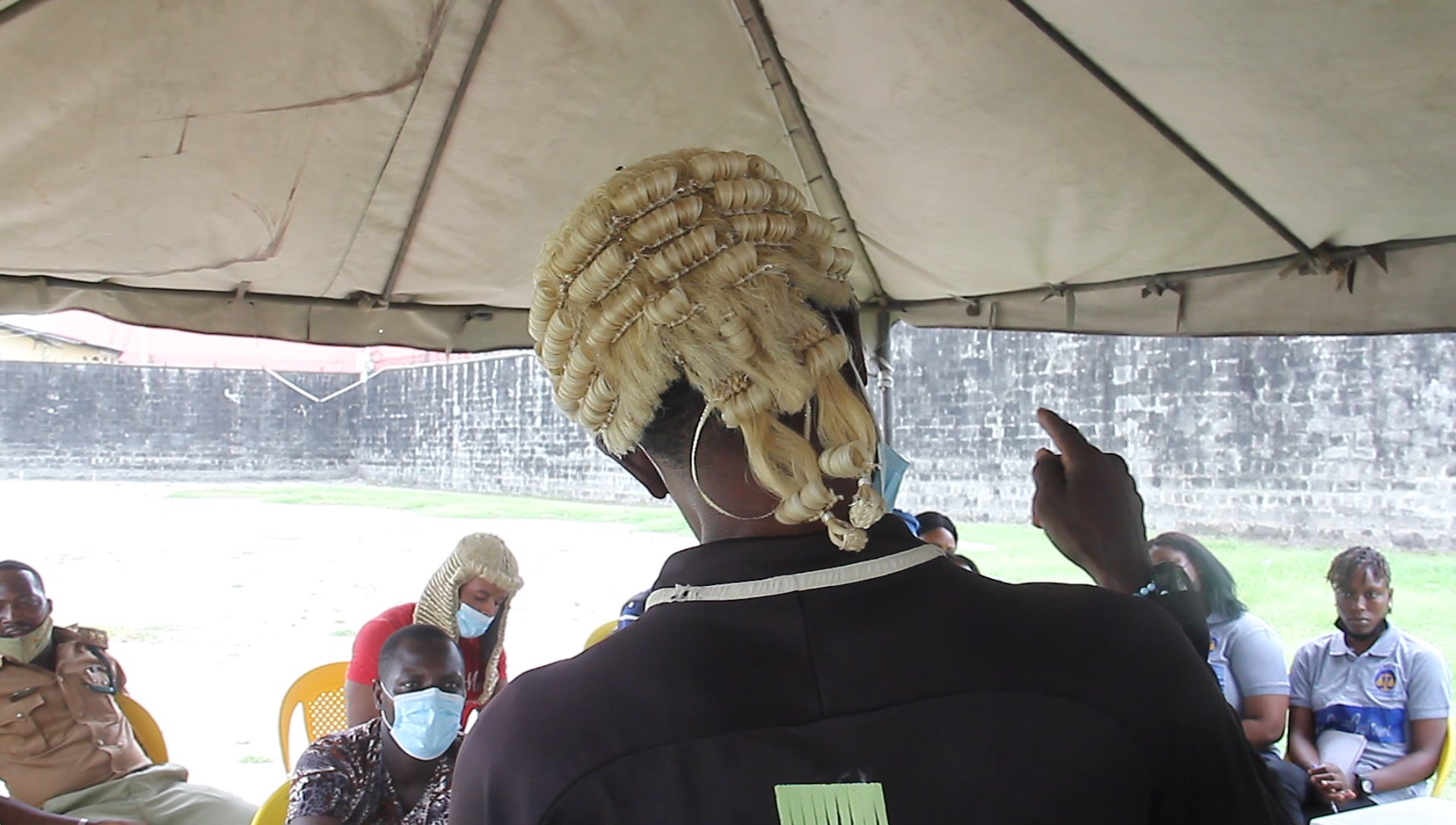
Human Power Plant
Podcast (English)
Podcast (Dutch)
Human Power Plant is an artistic research project into a human powered society. Every project starts with a site specific human power scenario. The scenario is the basis for prototyping human power plants to engage the community. The first scenario was a student housing building on the University Campus of Utrecht. The second scenario was a dredging colony projected in the former peet mining wetlands in Friesland. The third scenario is the House of the Future in the densely populated residential area Bospolder Tussendijken in Rotterdam.
Why human power?
Unlike solar and wind energy, human power is always available, no matter the season or time of day. Unlike solar panels, wind turbines, and batteries, humans don’t need to be manufactured in a factory. Unlike all other power sources, human power increases as the human population grows. Making human power the benchmark for our energy supply and consumption is the most sustainable energy source on earth.
Scenario 1:
2017 HUMAN POWERED STUDENT HOUSING
The Utrecht Science park wants to become a sustainable campus, but also expand with student housing, brainparks, research labs, and new hospitals. The Human Power Plant seized the opportunity and developed a scenario in which the 22-story vacant Van Unnik building is transformed into a student house with 750 rooms. The building is completely independent of fossil fuels – all energy is supplied by the students themselves.
[masterslider id=”110″]
Scenario
The students limit their energy consumption by jointly organising household tasks and by using energy-efficient technology. This includes both high-tech (such as LED lighting) and low-tech (such as thermal underwear). Three floors are occupied by a gym where all students produce electricity and heat for a few hours a day. Human waste and kitchen waste are converted into biogas for cooking.
[masterslider id=”111″]
Prototype
The Human Power Plant is an off-the-grid renewable energy source that produces electricity, compressed air, and water under pressure. This was a miniature version of the one needed to supply the 22 levels of the Van Unnik student building. Students could test their energy production and their physical and mental endurance. All the fitness machines had a unique sound when students worked out. Consequently, each time the Human Power Plant was operated, a work song was composed. The installation was further developed and exhibited in Deventer, Antwerpen, Rotterdam, and Groningen.
[masterslider id=”112″]
2018 DREDGING COLONY FRIESLAND
For the second scenario, the Human Power Plant headed to Friesland. The debate on energy transition mainly focuses on domestic energy consumption and transport. Industry and infrastructure are hardly discussed. In Drachten, we therefore put the dredging industry under the magnifying glass. For centuries, the Netherlands was dredged by hand. Today, this essential maintenance of the landscape is entirely dependent on fossil fuels. The Friesian landscape was excavated by hand for peat mining. This handmade landscape is still intact and can be the blueprint for the Netherlands for a human powered dredging system.
[masterslider id=”113″]
Scenario
The Frisian landscape, after centuries of reclamation, has been transformed into a Mangrove Forest, accessed by a canal network connecting small settlements on artificial mounds. The waterways are maintained by a colony of dredgers who, in exchange for maintaining a stretch of canal, have a home in the wilderness. The wilderness is a spectacular natural area for nature-loving tourists to camp, fish, and canoe. The Dredging Colony is organised according to the Frisian tradition of co-opting. Together they set the price of firewood, fishing, and camping. The flagship of the corporation is t’Juffertje, a human powered dredger to keep the deeper channels navigable.
[masterslider id=”114″]
Prototype
We organised an experiment in which 1 m3 of mud was removed from a canal in the traditional manner. Based on this, we calculated that about 800 people could keep the province of Friesland navigable. Because the local residents showed no interest, we found dredgers in the asylum seekers’ centre. Manual dredging is not financially viable, so we give asylum seekers a piece of land next to the piece of canal they maintain.
[masterslider id=”115″]
Scenario 3:
2020 HUMAN POWERED NEIGHBOURHOOD
Bospolder-Tussendijken was once built for dockworkers in the Rotterdam harbour. The neighbourhood consists largely of social housing and has been selected as one of the testing grounds for the energy transition: all households will be connected to a heat grid in the harbour. This system requires a huge investment in infrastructure and will stay dependent on the heat supply of the industry. The Human Power Plant developed a scenario for the neighbourhood in which energy production relies entirely on locally available resources: manpower and biomass, supplemented by wind and solar power when weather conditions are favourable.
[masterslider id=”116″]
Scenario
In the climate-neutral BoTu, all household tasks are organised communally. Neighbourhood squares have become commons, equipped with public kitchens, canteens, bathhouses, washrooms and toilets. All common facilities are under collective management. Residents have a few days of energy statute labour and thus work only half of the week in the regular economy. Yet the residents’ purchasing power has increased because they do not pay for the neighbourhood facilities. Food and firewood are produced within the neighbourhood, minimising the need to import. Energy consumption has fallen radically, but well-being has increased just as spectacularly.
[masterslider id=”117″]
Prototype
The House of the Future: BoTu on Human Power is a workshop for residents, artists and professionals to prepare for the energy transition to human power; the most sustainable energy source available. Two or three times a year, we organise an Energy Agora: a mini-festival around the energy needs in everyday life such as for cooking, heating, washing, dressing.
[masterslider id=”118″]
Location Various locations: Galerie nationale du Jeu de Paume Paris, (Mei 2017), Science Park Utrecht (2017), Kunstenlab Deventer (Augustus 2017), Archipel Antwerpen (2017), Museum Booijmans van Beuningen Rotterdam (2018), Sluisfabriek Drachten (2018), Bospolder Tussendijken Rotterdam (2019 – in process)
Period 2017 – 2021
Team Kris de Decker & Melle Smets
HPP – Human Powered Student Housing
Year 2017
Location Science Park, Utrecht
Team Kris De Decker, Melle Smets, Golnar Abbasi, Arvand Pourabbasi
Commisioned by Science Park Utrecht
Funding City of Utrecht
Partners Go Ape, ISA bewegingsanalyse, Low Tech Magazine, Olympos, Stichting Science Park, Instrumentatie Beta, HU Faculteit Natuur en Techniek, HU Faculteit Digitale Media & Communicatie
In collaboration with
Realisation and production: Mark Thur (Planemos)
Education advice: Caroline Maessen, Pim Rooymans
Technical advice: Jos van Gemert (Instrumentatie BETA University Utrecht),
Sport advice: Franklin van Doesburg & Robin Bhaggan (ISA bewegingsanalyse), Dirk Wijnalda (Olympos), Harry de Jong, William van Tiggele, David White
HPP – Dredging Colony Friesland
Year 2018
Location Sluisfabriek, Drachten
Team Kris De Decker, Melle Smets
Commisioned by TAAK
Funding Municipality Smallingenland
Partners COA Drachten, Craftwurk Smelne’s erfskip, Maatschappelijke Onderneming Smallingerland, Leerbedrijf ROC Friese Poort
In collaboration with
Realisation and production: Mark Thur (Planemos), “Theo Tegelaers, Nils van Beek (Curatoren), Simone Kleinhout, Charlotte Bijl (Projectleiders)
Models & Drawings: Melle Smets
Text: Kris De Decker
Photography: Philippa Driest
Reporter: Bram Esser
Graphic design: Golnar Abbasi
Participants dredging workshop: Erik Stoute, Hamad Abdulyahman, Serwan Khder, Oham Raad, Tijani Damilola, Younnouss
Set production: Crijn Mandema
Special thanks to Gea Smidt, Eduard de Ridder, Merit Prins, Klaas Hendrik Rozendaal, Nicky Korte, Amanda v/d Veen, Tjerk Kwast, Trea Westra, Jan Zandberg, Rik van der Wijk, Roelof Hazelhoff.
HPP – House of the Future
Year 2020-2021
Location Bospolder-Tussendijken, Rotterdam
Team Kris De Decker, Melle Smets, Klaas Burger
Commisioned by Museum Boijmans van Beuningen
Funding IDOLS, City of Rotterdam
Sponsor Theatercollectief Swalbe, LC Packaging, WeWatt
Partners Academie voor Beeldvorming, Bakkerij De Eenvoud, Delfshaven Coöperatie, Delfshaven Energie Coöperatie, Eneco, Enpuls, Havensteder, Het Taalbedrijf, Hosman Consultancy, Huurdersraad West, Low-tech Magazine, Media Atelier Delfshaven, Museum Boijmans Van Beuningen, Voor Goed | Rotterdam Impact Agency, Zelfregiehuis Delfshaven, Stichting Aardschap, Stichting Pauw, Stichting Wijkcollectie
In collaboration with
Golnar Abassi, Ayse Alcinkaya, Selda Atmaca, Willem Beekhuizen, Mama Bouziani, Florian Braakman, Ayse Yalcinkaya Budaklier, Sylvia Busby, Patricia Ceysens, Teun van den Ende, Zakia Erkarchoui, Hayat Errakba, Bart Groenewegen, Marieke Grund, Ayaan Hassan, Prof. dr. Clemens Hosman, Thamar Kemperman, Annemartine van Kesteren, Hans Koedood, Tara Lewis, Carmen Martinez Noya, Sarra M’saiss, Moenne van la Parra, Andre Pijnappel, Hugo Post, Arvand Pourabbasi, Miriam Roelofs, Moni Siegfried, Michael Siem, Javad Shiamizadeh, Houria Tourich, Audry Wilson, Wilma van der Wilt, Fatiha Zabouti
Special thanks to Lotte van Diggelen, Maria Kluijtenaar, Michel van Leeuwen, Jaques Stoppelenburg


